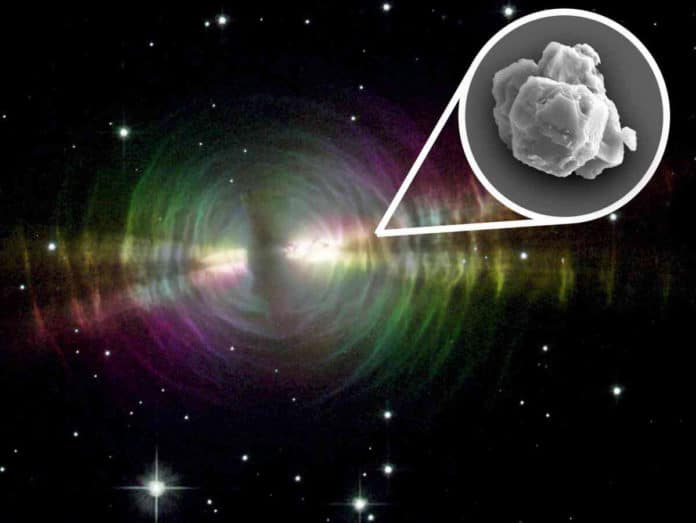A meteorite that fell fifty years ago in Australia, containing a rare sample (stardust) from interstellar space that is as much as 7.5 billion years old. That makes the meteorite and its stardust- the oldest material known to exist on Earth.
The stardust was formed before the sun and is known as presolar grains. They are extremely rare and found only in about five percent of meteorites that have fallen to Earth.
Philipp Heck, a curator at the Field Museum, associate professor at the University of Chicago, said, “They’re solid samples of stars, real stardust. These bits of stardust became trapped in meteorites where they remained unchanged for billions of years, making them time capsules of the time before the solar system.”
Stars born when bits of dust and gas floating through space locate one another and collapse in on one another and heat up. They burn for millions to billions of years, and then they die. When they die, they pitch the particles that formed in their winds out into space, and those bits of stardust eventually form new stars, alongside new planets and moons and meteorites.
Scientists analyzed 40 pre-solar grains contained in a portion of the Murchison meteorite that fell in Australia in 1969.
Jennika Greer, a graduate student at the Field Museum and the University of Chicago, said, “It starts with crushing fragments of the meteorite down into a powder. Once all the pieces are segregated, it’s a kind of paste, and it has a pungent characteristic-it smells like rancid peanut butter.”
Heck said, “This rotten-peanut-butter-meteorite paste was then dissolved with acid until only the presolar grains remained. It’s like burning down the haystack to find the needle.”
To know the age of grains, scientists quantify how long they had been exposed to cosmic rays in space. The longer they are exposed, the more of these elements form.
Scientists used a particular form (isotope) of the element neon – Ne-21 – to date the grains.
Heck explained, “I compare this with putting out a bucket in a rainstorm. Assuming the rainfall is constant, the amount of water that accumulates in the bucket tells you how long it was exposed. By measuring how many of this new cosmic-ray produced elements are present in a presolar grain, we can tell how long it was exposed to cosmic rays, which tells us how old it is.”
Scientists discovered that some of the presolar grains in their sample were the oldest ever discovered-based on how many cosmic rays they’d soaked up, most of the grains had to be 4.6 to 4.9 billion years old, and some grains were even older than 5.5 billion years.
Heck said, “I am sure there are older pre-solar minerals in Murchison and other meteorites, we just haven’t found them yet.”
“Some people think that the star formation rate of the galaxy is constant,” says Heck. “But thanks to these grains, we now have direct evidence for a period of enhanced star formation in our galaxy seven billion years ago with samples from meteorites. This is one of the key findings of our study.”
“With this study, we have directly determined the lifetimes of stardust. We hope this will be picked up and studied so that people can use this as input for models of the whole galactic life cycle.”
The paper describing the findings is published in the journal PNAS.
